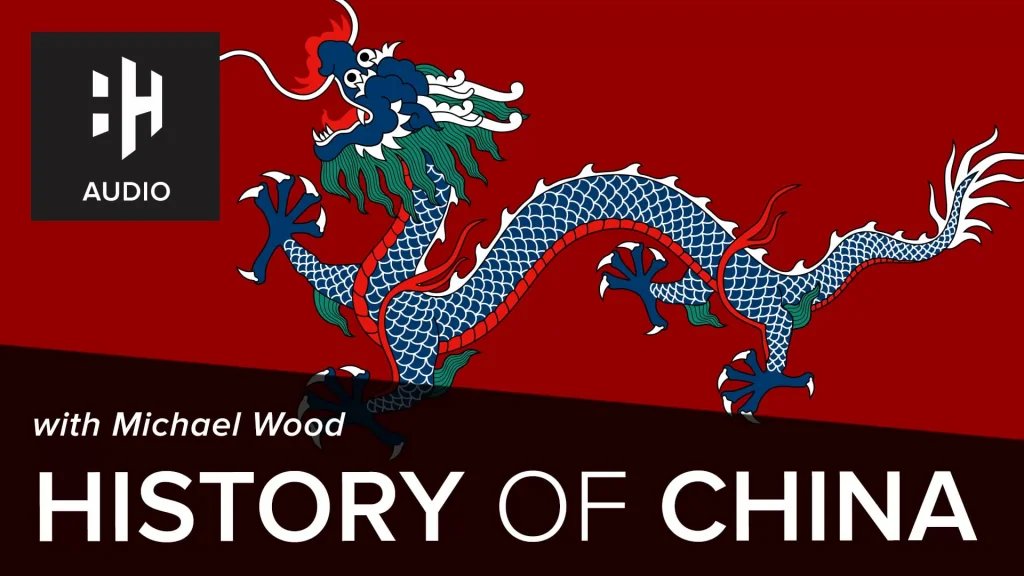

The Tang dynasty of China (618-907 AD) represents something of a ‘golden age’ in imperial Chinese history, characterised by a proliferation of the arts, economic development and territorial expansion into Central Asia.
Although the Tang era ultimately descended into violence and rebellion, it is remembered as one of the most prosperous and culturally influential eras in Chinese history. It saw the introduction of new codes of law, sympathetic rule and an outpouring of artistic works, especially poems.
The Tang dynasty’s capital of Chang’an ruled one of the largest empires in world history, controlling swathes of Eurasia from Korea in the east to Afghanistan in the west.
Here are 10 facts about the Tang dynasty.
1. The Grand Canal was essential to the Tang’s prosperity
The building of the Grand Canal connecting China’s north and south during the previous Sui dynasty (581-618 AD), played a huge part in the Tang dynasty’s economic and social progress. The 2000 km-long Grand Canal consisted of four canals, stretching from Beijing to south China, connected to the Hai, Yellow, Huai and Yangtze rivers.
The canal drove unprecedented development and trade through China during the Tang dynasty era, playing an important role in ensuring the supply of materials and goods for the empire’s capital, Chang’an, one of the most populous citadels in the ancient world.
2. Emperor Taizong was a tolerant and rational leader

Emperor Taizong of the Tang dynasty.
Image Credit: National Palace Museum via Wikimedia Commons / Public Domain
Emperor Taizong (Li Shimin) was the second emperor of the Tang dynasty, ruling from 626 to 649. Li, a follower of Confucius and a rationalist, saw himself as a servant of the people, focusing on smart spending instead of putting the economic weight on his subjects’ shoulders.
In essence, he believed that the people should be happy and not stressed under royal rule. He believed that the emperor was a boat, and the people were water supporting the boat who could also swallow it up. His policies attached importance to the interests and feelings of his citizens and this led to a relatively harmonious and prosperous society.
3. The Tang Code introduced a new penal system
In the 7th century, the Tang dynasty introduced the Tang Code, a revised penal system governing China’s laws and punishments. It was a complex code informed by Confucian principles and rationalism.
With it, the Tang court abolished certain forms of cruel corporal punishment. Though it didn’t totally abolish capital punishment for serious crimes, it reserved the death penalty for rare occasions that would be referred to the emperor and the central authorities.
 Listen Now
Listen Now4. The Tang dynasty’s capital was the city of Chang’an
Chang’an was the capital of China under the Sui dynasty, known at the time as Daxing. The Tang dynasty changed the city’s name and reconstructed its former imperial quarters as its own capital. Chang’an, with a population of a million within its walls and one million outside, covered an area of 84 square kilometres.
The city was divided into 110 neighbourhoods, consisting of wide avenues and narrow streets dividing the city into 9 distinct gridded sectors. The walled-off enclosure of the Daming Palace (the imperial palace of the Tang dynasty) was connected by the three gates in the northeast.
5. Diverse ethnic groups were integrated into Tang society
The Tang dynasty’s capital, Chang’an, was an inclusive site, open to new ideas and cultures that brought prosperity and diversity to China. Ethnic groups were integrated, diverse religious practices were tolerated and social harmony embraced.
The Tang encourage people with talent, whatever their background and ethnicity, to come to Chang’an and participate as working citizens. The citadel became not only a major centre for business but also a productive stage for writers and artists.
6. Emperor Taizong adored his six war horses

A Chinese stamp depicting one of the ‘six steeds’ of Emperor Taizong.
Image Credit: Joinmepic / Shutterstock.com
Emperor Taizong had a fondness for horses and had 6 favourite steeds that accompanied him through various wars: Saluzi, Quanmaogua, Baitiwu, Telebiao, Qingzhui and Shifachi. It is recorded that after they died, whenever Taizong was reminded of them he would fall into melancholy.
Taizong even had famous painter Yan Liben create paintings of the steeds and insisted that sculptures of the horses be placed in the Zhaoling Mausoleum, the biggest mausoleum of the Tang dynasty, where his first wife was buried.
7. The Tang ushered in a golden era of poetry
During the Tang dynasty, many academies were founded and this led to an influx of students from the empire and beyond. These schools specialised in art, architecture, Buddhism and Confucianism, heralding a golden era in China of the arts and literature, including poetry.
Over 48,000 poems were penned by over 2000 authors during the Tang, and much of their work survives today. A variety of poetry styles evolved during this period including ‘gushi’ and ‘jintiahi’, while a culture of celebrity poets such as Li Bei and Du Fu, who both held government positions while Wang Wei (701-761) and Cui Hao (704 -754), became famous for their innovative constructions of verses.
8. Tang-era China was organised by three administrative departments
In Tang dynasty China, there were 3 key departments of the civil service – the Chancellery, the Department of State Affairs and the Secretariat – along with 6 ministries managing revenue, rites, personnel, defence, justice and infrastructure.
Imperial exams were held for those who wanted to compete for a place in the civil service. To be considered for government, applicants had to demonstrate a knowledge of Confucianism, refinement in speech and appearance, have a talent with the quill and be as expressive as a poet.
 Watch Now
Watch Now9. The Tang dynasty expanded into Central Asia
The Tang dynasty conquered and subdued portions of Central Asia during the 640s and 650s: large campaigns were launched against the Gokturks (nomadic Turkic peoples in medieval Inner Asia) and various other warrior armies keen to invade the Tang empire.
Conscription of soldiers for the Tang dynasty’s armies played a major role in Tang victories and allowing the empire to maintain access to the Silk Road and its means to transport goods. At its height, the Tang’s influence stretched from present-day Korea to Afghanistan.
10. Buddhism proliferated in China under the Tang dynasty
Through the ancient Silk Road and the Grand Canal, the Tang dynasty opened itself to the outside world and its influences. During the Tang dynasty, an inquisitive interest in Buddhism encouraged the religion’s popularity throughout China.

Central Asian Buddhist monks, 8th century AD.
Image Credit: National Institute of Informatics / Public Domain
In 626, the Chinese monk Xuanzang made a 17-year journey in search of Buddhist scriptures with the aim of bringing its teachings from India to China. By the time Xuanzang returned back to the city of Chang’an through the Silk Road, he had travelled along 25,000 kilometres of road to 110 different countries.
The famous Chinese novel Journey to the West was based on Xuanzang’s journey to ancient India to acquire Buddhist scriptures. He translated around 1300 volumes of Buddhist scriptures.













